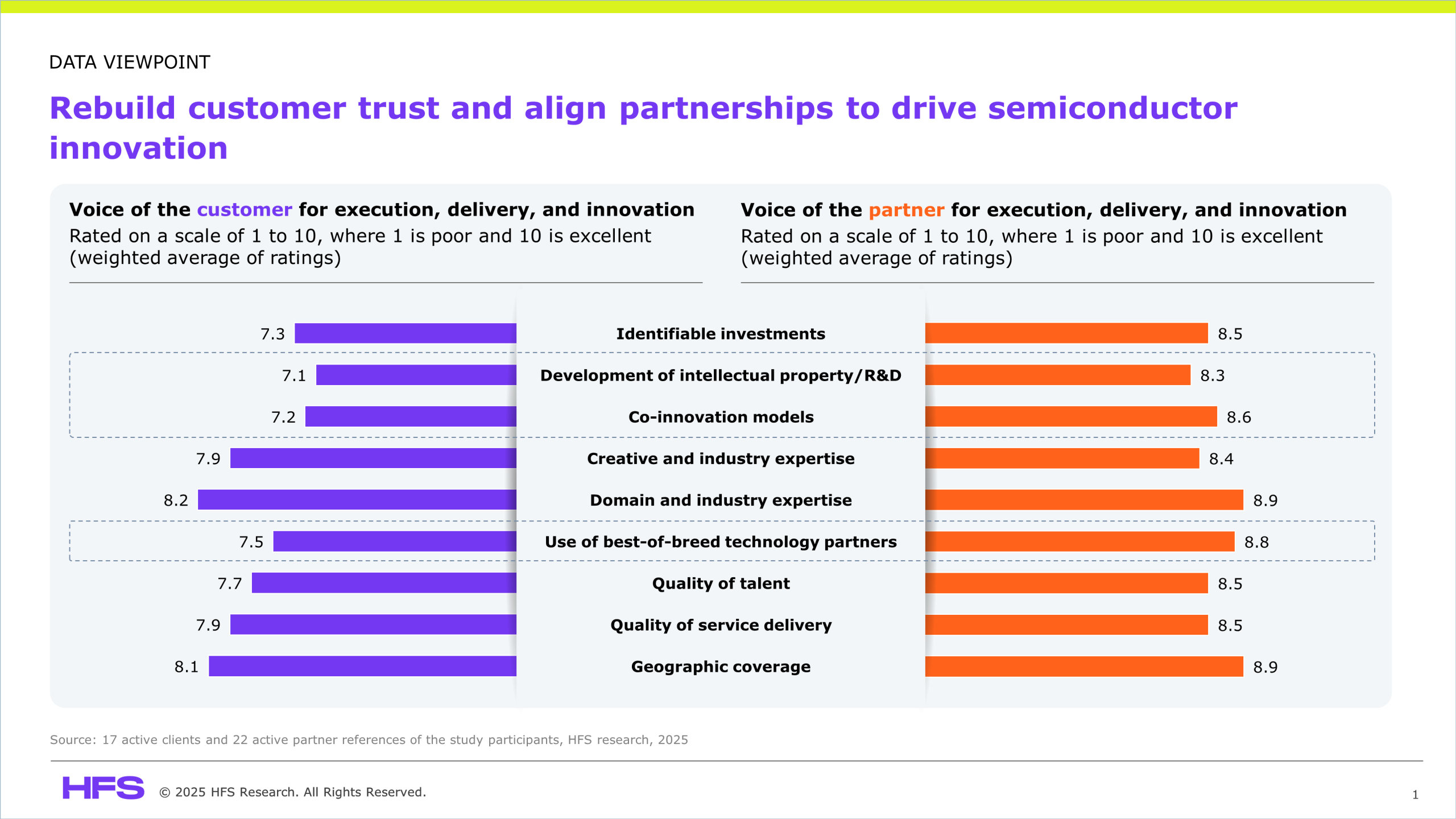
The semiconductor business is founded on high-risk cooperation in the value chain, beginning with R&D and design and going all the way through to manufacturing and ecosystem integration. Yet, in our upcoming research, ‘Semiconductor Services Providers horizon’, evidence indicates a discrepancy between partners’ views of their performance and how the customers see it. Here are the top three most important takeaways on the mismatched parameters of our reference surveys:
- Development of intellectual property/ R&D: In the semiconductor business, where technology innovation is the top priority, a low client score of 7.1(partner scored an average of 8.3) for R&D and IP development is a cause of concern. Clients are upset with delays in technology roadmap implementation, the lack of transparency of co-innovation milestones, and the lack of visibility regarding how investment in IP leads to tangible value. In an industry characterized by Moore’s Law and constant innovation cycles, clients seek technical progression and expect transparent, collaborative, and outcome-driven innovation efforts.
- Ecosystem alignment issues: The significant rating difference on best-of-breed technology partners (7.5 by customers compared to 8.8 by partners) highlights a perception gap regarding how well the partner ecosystem performs. The partners might feel they deliver robust integration, but customers generally struggle with fragmented systems, siloed deployment, and poor interoperability. As a result, the strategic value of these partnerships is lost, particularly in chip design and manufacturing, where seamless communication is vital. This perception gap eliminates the effectiveness and responsiveness that semiconductor firms need in the face of increased competition.
- Co-innovation disconnects: The co-innovation score gap, with a score of 7.2 from clients and 8.6 from partners, reflects an increasing gap in collaborative participation in the semiconductor sector. Despite the industry’s reliance on collaborative development agreements, chip tailoring for specific customers, and co-design enablement, clients are not integrated into the innovation process. This indicates that partners innovate independently, without complete integration or involvement of their customers. This gap undermines trust and generates solutions that are technologically superior but fail to solve client-specific issues or strategic objectives.
The Bottom Line: To close the gap between partner perspectives and client dreams, semiconductor companies must actively re-synchronize their partnership and innovation strategies.
This is achieved through greater openness in research and development, where transparently sharing milestones, progress reports, and intellectual property roadmaps can create confidence and clarity.
![]()